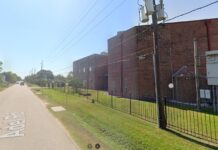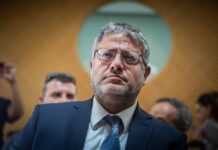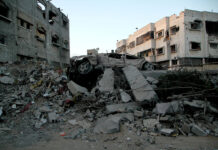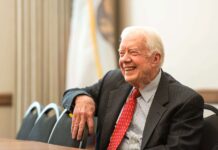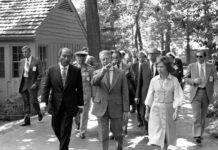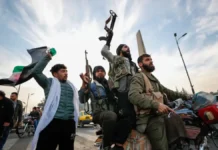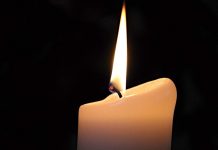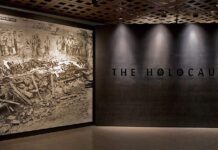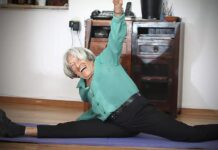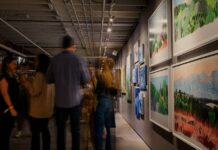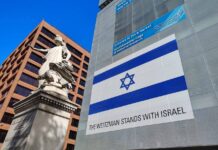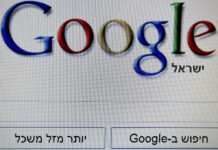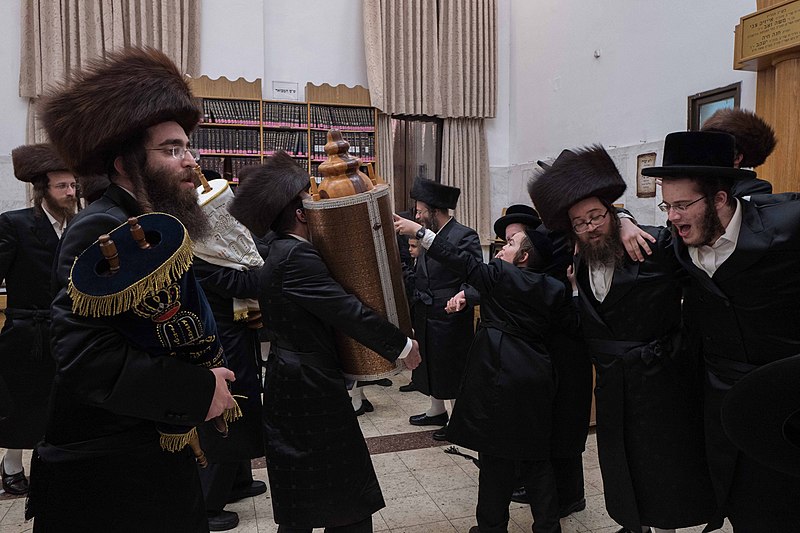As we approach the one-year anniversary [on the Hebrew calendar] of the devastating attack on Simchat Torah, a day celebrated as one of the most joyous in the Jewish calendar, we are confronted with a profound paradox. Over 1,200 people were murdered, and hundreds more were taken hostage. How can we reconcile such joy with such deep sorrow on this powerful day?
On November 30th, 1941, the Nazis conducted another one of their dreaded roundups, holding the Jews in the Reisisher Minyanim synagogue of Riga. My great-great-grandfather, Reb Yitzchak Horowitz, was among those captured. Hundreds of Jews were forced to watch their brethren being burned alive in the synagogue. Through the windows, they saw Reb Yitzchak, still clothed in a torn tallit, walking up to the holy ark and removing a Torah scroll. With a booming voice, he made the blessing of sanctifying God’s name, and then joined his friends in a small circle, dancing together while singing a Chassidic Simchat Torah song. As the building went up in flames, a crescendo of screams and cries were intermingled with the loud voice of Reb Yitzchak’s singing. May God avenge their blood.
This story has always been difficult to comprehend. How could one have the courage to be happy at such a painful moment? What gives a man strength to dance in the face of evil?
The question is more important now than ever. Why should we dance on a day so full of darkness? How will we dance?
Unfortunately, this is not the first time in our history that we have faced such circumstances. But even in the darkest of places, Simchat Torah has been celebrated.
Gideon Katz, or “Gidi,” was a respected Israeli jet fighter pilot who always felt a deep connection to the Holocaust and the struggles of the Jewish people. During a tour of concentration camps, he found himself drawn to Stutthof, a brutal camp where over 28,000 Jews were killed.
As he stood outside the gas chamber, a wave of emotion overcame him. Instead of despair, he felt an urge to sing and dance. He pulled out a small prayer book his mother had given him and began to sing a joyful Simchat Torah song, Sisu ve’simchu be’simchat Torah. (Rejoice and be joyous on Simchat Torah)
When he told his grandmother about his experience, she revealed that when she was only ten years old, she was taken to Stutthof. Her father was a sonderkommando, forced to carry bodies from the gas chambers to the crematorium. One night, after hours of unspeakable work, her father stepped outside with his group while the German guard walked away for a smoke. Her father gathered the men and said, “They’ve taken away our humanity, but tonight is Simchat Torah. No matter how hard it is, we must dance and sing, to remind ourselves that we are not animals. We are Jews, children of God.” And right there, beside the crematorium, he pulled a torn page of a siddur from his pocket, and they danced and sang, Sisu ve’simchu be’simchat Torah.
The same song that his great-grandfather had sung, standing in the very place where he was now standing, had reached across generations to him.
On Simchat Torah, we celebrate something greater than ourselves: the indestructible and untouchable nature of our souls, our connection to God. The soul that will never be destroyed. They could kill our bodies, but they cannot kill our spirits. On Simchat Torah, we dance because we are the children of God, and we celebrate that. No power can take that away, not the Egyptians, Haman, or the Greeks, not by the Babylonians or the Romans, not by the Nazis and not by Hamas.
We dance knowing that there is something greater than our understanding, a God beyond our comprehension. We will dance, perhaps with tears and a broken heart, but we will dance nonetheless. For the souls that can not, for the future generations of Am Yisrael.
*
Rabbi Shmuly Begun is the spiritual leader of Chabad of Tierrasanta.
Republished from San Diego Jewish World


